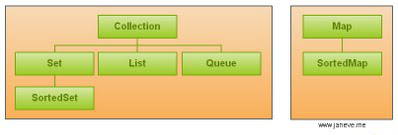Introduction :
Years ago an enterprising company named Caucho decided to write the "most reliable application server in the Open Source market." Their core product is a Java EE compliant Web server they call Resin, and at its heart is Quercus: a fast PHP interpreter written in cross-platform Java.
What is Quercus :
Quercus is pioneering a new mixed Java/PHP approach to web applications and services. On Quercus, Java and PHP is tightly integrated with each other - PHP applications can choose to use Java libraries and technologies like JMS, EJB, SOA frameworks, Hibernate, and Spring. This revolutionary capability is made possible because 1) PHP code is interpreted/compiled into Java and 2) Quercus and its libraries are written entirely in Java. This lets PHP applications and Java libraries to talk directly with one another at the program level. To facilitate this new Java/PHP architecture, Quercus provides an API and interface to expose Java libraries to PHP.
Benefits of Quercus :
Quercus and Quercus' PHP libraries are written entirely in Java, thereby taking the advantages of Java applications and infusing them into PHP. PHP applications running on Quercus are simply faster, easier to develop, more capable, more secure, and more scalable than any other PHP solution.
Quercus gives both Java and PHP developers a fast, safe, and powerful alternative to the standard PHP intepreter. Developers ambitious enough to use PHP in combination with Java will benefit the most from what Quercus has to offer.
Years ago an enterprising company named Caucho decided to write the "most reliable application server in the Open Source market." Their core product is a Java EE compliant Web server they call Resin, and at its heart is Quercus: a fast PHP interpreter written in cross-platform Java.
What is Quercus :
Quercus is pioneering a new mixed Java/PHP approach to web applications and services. On Quercus, Java and PHP is tightly integrated with each other - PHP applications can choose to use Java libraries and technologies like JMS, EJB, SOA frameworks, Hibernate, and Spring. This revolutionary capability is made possible because 1) PHP code is interpreted/compiled into Java and 2) Quercus and its libraries are written entirely in Java. This lets PHP applications and Java libraries to talk directly with one another at the program level. To facilitate this new Java/PHP architecture, Quercus provides an API and interface to expose Java libraries to PHP.
Benefits of Quercus :
Quercus and Quercus' PHP libraries are written entirely in Java, thereby taking the advantages of Java applications and infusing them into PHP. PHP applications running on Quercus are simply faster, easier to develop, more capable, more secure, and more scalable than any other PHP solution.
Quercus gives both Java and PHP developers a fast, safe, and powerful alternative to the standard PHP intepreter. Developers ambitious enough to use PHP in combination with Java will benefit the most from what Quercus has to offer.



